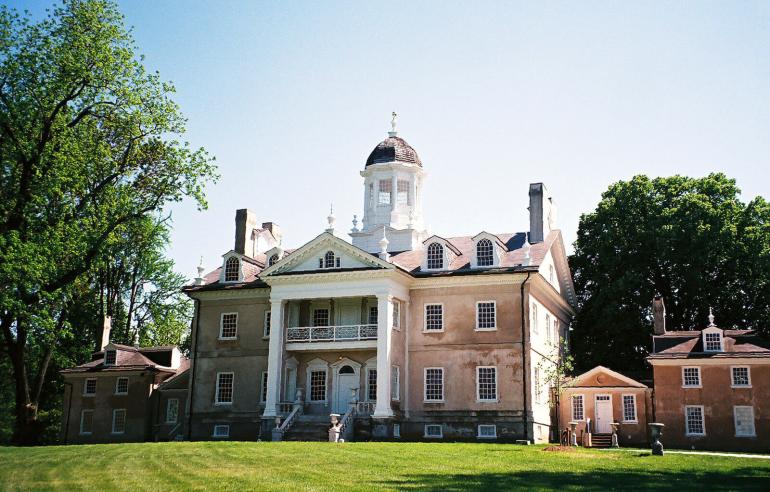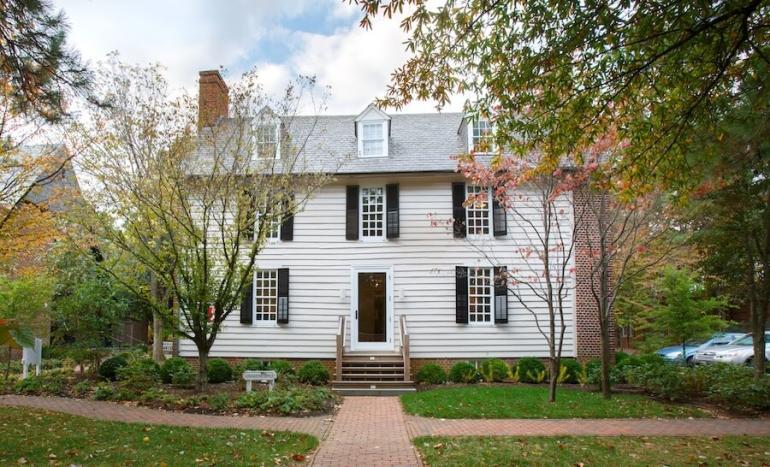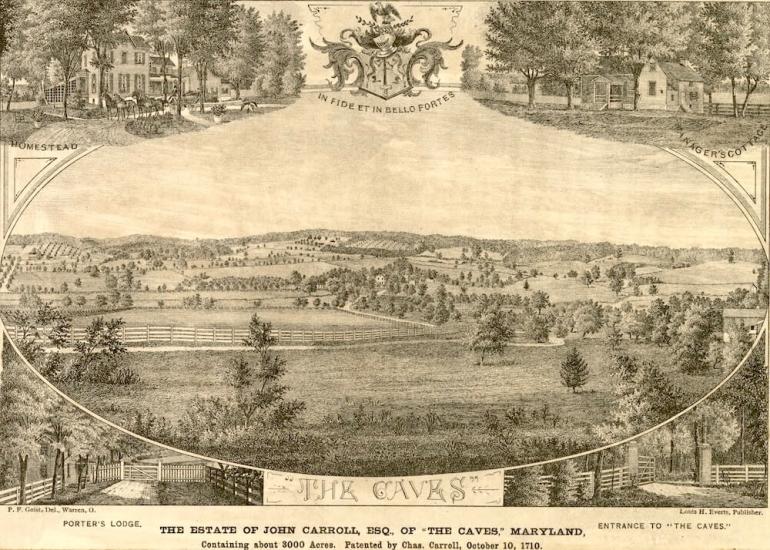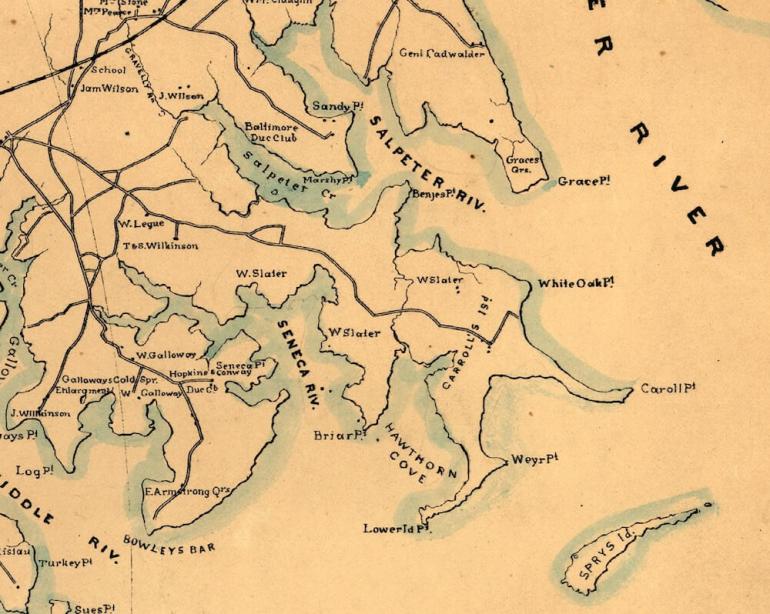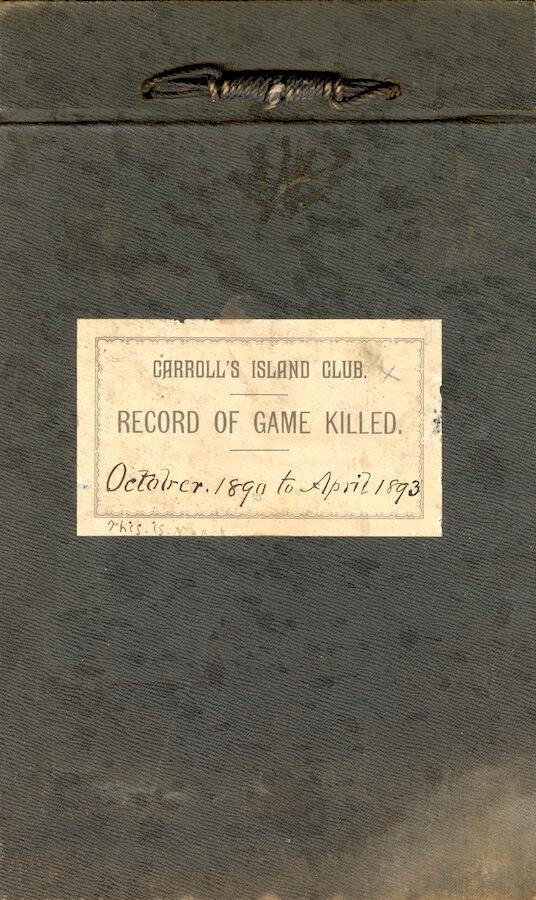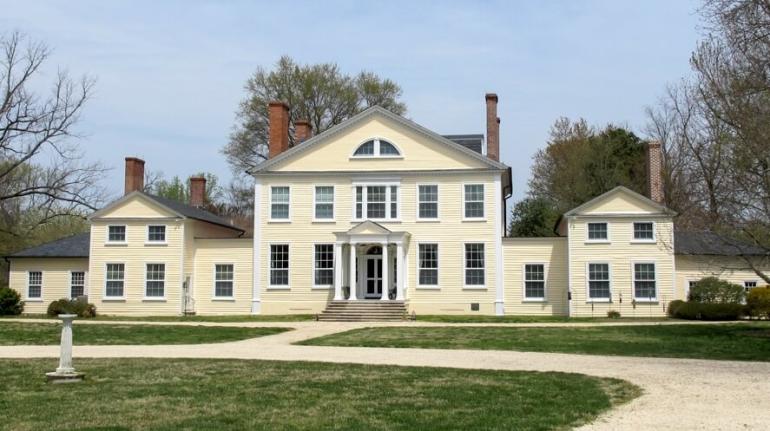Perry Hall
This agricultural plantation in northeastern Baltimore County included tobacco fields, cropland, and livestock. More than 70 enslaved people toiled here. High on a hill above Gunpowder River Valley, the 16-room mansion was completed by Harry Dorsey Gough in 1776. It was a showpiece estate, similar in style to Hampton, the nearby home of his wife’s (Prudence Carnan Gough) brother, Governer Charles Carnan Ridgley. Perry Hall was named for an ancestral home near Birmingham, England. It had an impressive wine cellar, an expansive grand hall, and a chapel for religious services. Through the marriage of Gough’s only child Sophia to James Maccubbin Carroll, the plantation became a Carroll property. Today, the mansion is owned by the Baltimore County Department of Parks.
Hampton
Located in north Baltimore County, this former industrial plantation was home to seven generations of the Ridgley family from 1745 to 1948. The Georgian mansion, completed in 1790, was inspired by Howard Castle in England. More than 300 enslaved workers toiled in Hampton’s extensive farm which also included ironworks, gristmills, orchards, coal mining, and stone quarries, as well as horse breeding and racing operations. Many generations of Carrolls and Ridgleys intermarried. Today the house and grounds are managed as a museum by the National Park Service.
Carroll House
Built in Annapolis in 1723 by Dr. Charles Carroll, this was the childhood home of Charles Carroll, Barrister, and his siblings. Originally located in Annapolis at Main and Conduit streets, it was saved from demolition by Historic Annapolis and moved in 1955 to the grounds of St. John’s college where it serves as the Admissions Office.
The Caves
Patented by Dr. Carroll c. 1710, this agricultural plantation in northwest Baltimore County, (now known as Owings Mills) was named for its limestone caves. Tenant farmers and enslaved laborers grew tobacco, wheat, corn, vegetables and flax. They also raised horses and livestock, and mined limestone and iron ore for the Baltimore Iron Works. The Barrister also built a mill here. The 18th century structures that still remain today serve as private homes, garages, and stables.
Carroll's Island
The entire island, located where the Gun Powder River emptied into the Chesapeake Bay, was gradually acquired by the Barrister by 1770. His father had first patented a portion of the island in 1730. Enslaved people worked the plantation which likely grew tobacco, wheat, flax, and livestock. After the Carroll family moved out in the 1840s, the island became a waterfowl hunting preserve. The Carroll’s Island Ducking Club, run by an exclusive group of wealthy families, built a clubhouse and hunted there from about 1870s through 1910. Since WWI, it has been a part of the Aberdeen Proving Ground, where chemical and biological warfare research is conducted. The once beautiful island is now a Superfund cleanup site, polluted by toxins and hazardous waste.
Wye House
This former plantation near Easton in Talbot County was founded in the 1650s by Welsh Puritan Edward Lloyd and still remains in the Lloyd family. Both the Barrister and Margaret Tilghman Carroll were Lloyd relations and frequent visitors. The estate features a wooden-framed Southern Plantation house, formal gardens, and an orangery dating from 1785, that is likely the oldest extant greenhouse in the country. At its height, the plantation totaled over 42,000 acres where tobacco, corn, wheat, and livestock were raised by more than a thousand enslaved people.
Abolitionist leader Frederick Douglass was enslaved here for more than a year as a child of 7. He was held by Aaron Anthony, the Lloyd’s overseer and wrote extensively in his autobiography about first becoming aware of the brutality of enslavement during his time at Wye House. Archeological excavations conducted by the University of Maryland from 2004-2012 have uncovered important insights into the daily lives of the enslaved workers at Wye House. The teams discovered at least four intentionally buried bundles, similar to the one found at Mount Clare containing a crystal, that are believed to demonstrate the West African spiritual practices of the enslaved.


